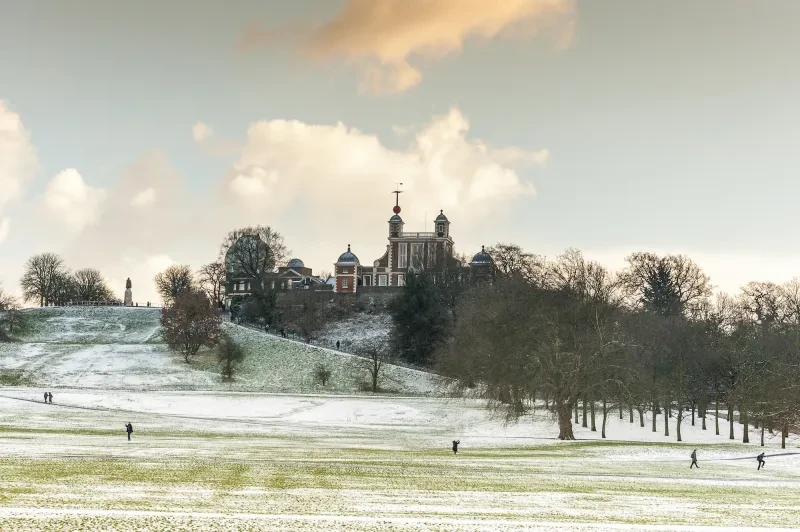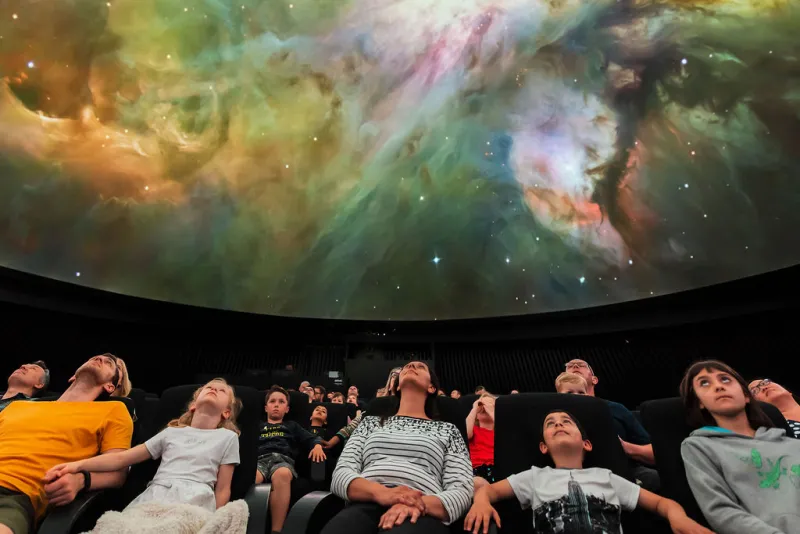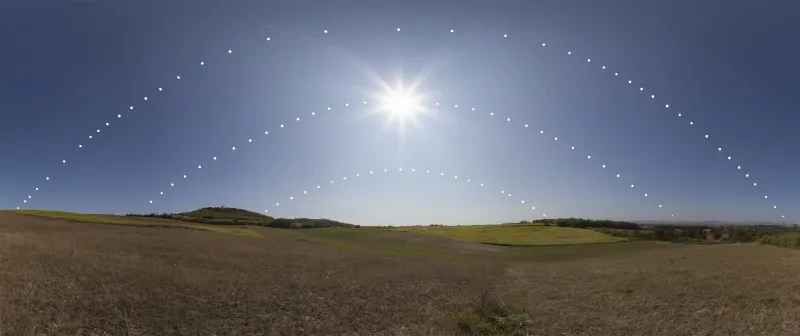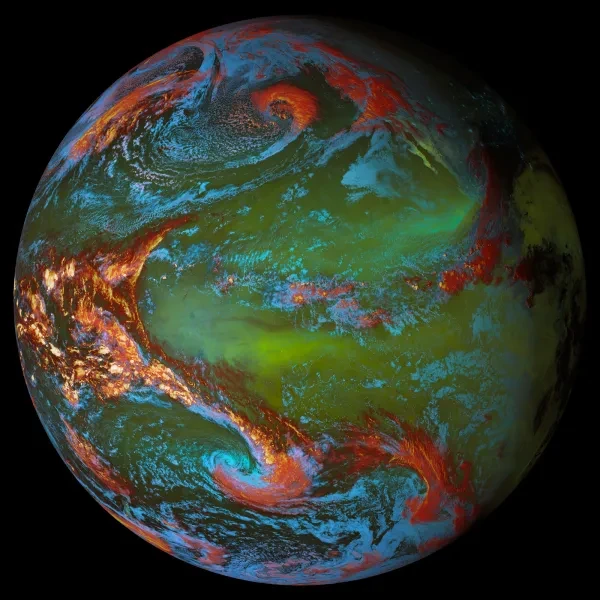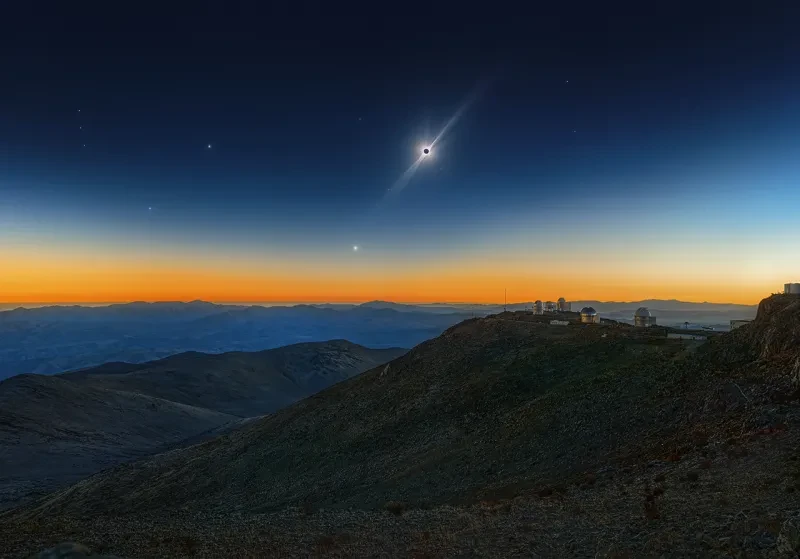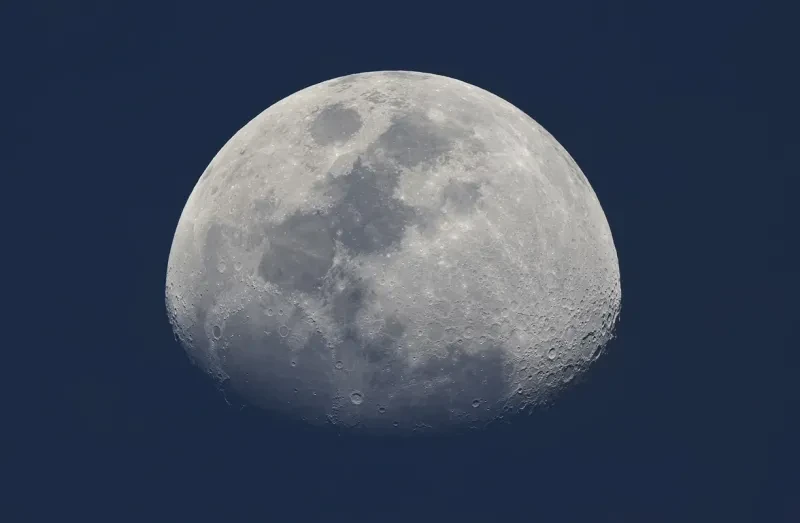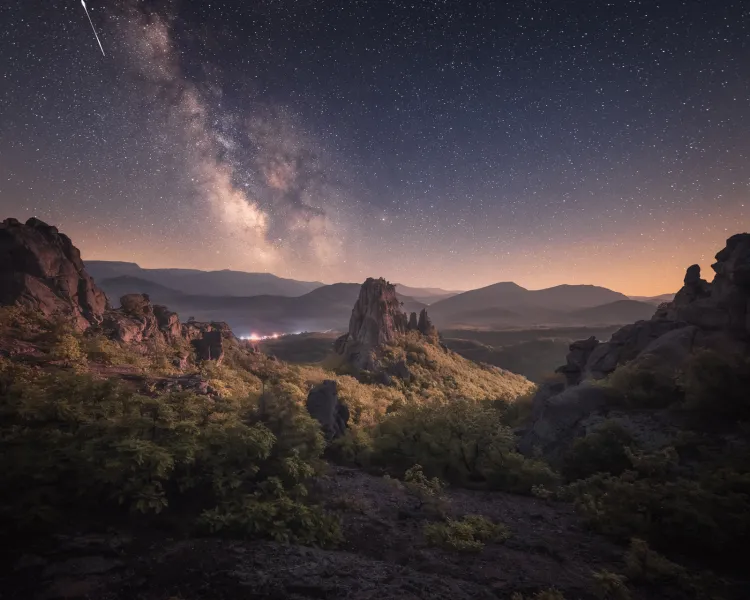
The winter solstice is the day of the year with the fewest hours of daylight.
In the northern hemisphere this date falls in December every year. In 2025 the winter solstice will occur on Sunday 21 December.
Learn more about the astronomy behind the solstice with Royal Observatory Greenwich.
Make the most of the long nights
Sign up to our space newsletter for monthly astronomy guides, special events and exclusive news from Royal Observatory Greenwich.
Why is the winter solstice the shortest day of the year?
The apparent position of the Sun in the sky changes throughout the year. During the summer months it rises higher in the sky and is above the horizon for longer. In the winter the Sun's position is lower and its time in the sky is shorter.
This variation happens because the Earth orbits at an angle: it is tilted 23.4 degrees on its axis.
During summer in the northern hemisphere the North Pole is tilted towards the Sun, and therefore this part of the Earth receives more direct sunlight and longer daylight hours. During winter in the northern hemisphere the North Pole is tilted away from the Sun, resulting in fewer daylight hours.
This animation shows how the tilt of the Earth's axis influences the seasons. For more great astronomy explainers and resources, check out the Royal Observatory's schools pages.
The winter solstice occurs at the point when this tilt away is at its maximum and the Sun is lowest in the sky. This is what gives us the shortest day and the longest night of the year.
If you're in the southern hemisphere the opposite is true: in December the South Pole is tilted towards the Sun, making it summertime 'Down Under'.

Between Solstices
This image, a composite of dozens of photographs taken by Astronomy Photographer of the Year 2021 entrant György Soponyai, shows the changing arcs of the Sun throughout the year. The smallest arc at the bottom marks the winter solstice, and the largest one at the top the summer solstice. The band in the middle is the 'equinox', with roughly equal hours of day and night.
How long is the shortest day of the year?
The actual moment of the solstice in 2025 will occur at 3.03pm GMT in the UK, but most people concentrate on the whole solstice day, which has been recognised by holidays and festivals in many cultures around the world.
The shortest day lasts 7 hours 49 minutes and 42 seconds in London. This means that the length of the day during the winter solstice is 8 hours, 49 minutes shorter than the summer solstice.
Do the days get longer after the winter solstice?
After the shortest day, the days start getting longer and the nights shorter. At the spring and autumnal equinoxes the day and night hours are around the same length, each lasting around 12 hours. The number of daylight hours peaks at summer solstice.

What does ‘solstice’ mean?
The world 'solstice' comes from the Latin 'solstitium', meaning 'Sun stands still' – because the apparent movement of the Sun's path north or south stops before changing direction.
Does the solstice mark the start of winter?
It depends. If you're talking about 'astronomical winter' then yes, the solstice is the first day of winter. However, if you're referring to 'meteorological winter' then the first day of winter is 1 December.
This is because meteorologists (scientists who study weather and climate patterns) split the year evenly, with three months for each of the four seasons.
Whichever definition you use, it might not 'feel' like winter straight away. The coldest temperatures during the day are generally felt some time after the shortest day has passed.
How is the winter solstice celebrated?
Winter solstice is an important time for cultures across the globe. Under the old Julian Calendar, the winter solstice occurred on 25 December. With the introduction of the Gregorian calendar the solstice slipped to the 21st, but the Christian celebration of Jesus’s birth continued to be held on 25 December. Here are some of the festivals celebrated internationally, past and present:
Yule (Neopagan)
The pre-Christian festival, the Feast of Juul, was observed in Scandinavia at the time of the December solstice. Fires would be lit to symbolise the heat and light of the returning Sun and a Yule log was gathered and burnt in the hearth as a tribute to the Norse god Thor.
Present-day Christmas customs and traditions such as the Yule log, Yule boar, Yule singing, and others stem from pagan Juul. Today the event is celebrated in some forms of Modern Paganism.
Saturnalia (Ancient Rome)
In Ancient Rome, the festival of Saturnalia began on 17 December and lasted for seven days. As the name suggests, the festival was celebrated in honour of Saturn, the father of the gods – the same deity after which the sixth planet in our solar system is named.
People would make sacrifices at the Temple of Saturn before banqueting and giving gifts. The usual law and order would be suspended, schools and businesses would close, and quarrels would be forgotten.
Dongzhi Festival (Asia)
In China and East Asia, the Dongzhi Festival is one of the most important times of the year. It celebrates the return of longer daylight hours and ultimately an increase of positive energy. The festival’s origins can be traced back to the yin and yang philosophy of balance and harmony.
During this time for getting together, families in southern China often make and eat tangyuan: balls of glutinous rice, occasionally brightly coloured, cooked in a sweet or savoury broth.
Yalda (Iran)
Shab-e Yalda ‘Yalda night’ or Shab-e Chelleh ‘night of forty’ is an Iranian festival celebrated on the ‘longest and darkest night of the year’. Friends and family get together to eat, drink and read poetry until the early hours. Pomegranates and watermelons are particularly significant.
The winter solstice at Stonehenge
Today, people from the UK and beyond visit the ancient site of Stonehenge to celebrate the winter and summer solstices.
One reason why this is a popular site to visit is that it's possible to glimpse the Sun’s rays through the stones, which are positioned to align with the path of the Sun. Most people arrive late on the night of the solstice to catch the sunrise.
